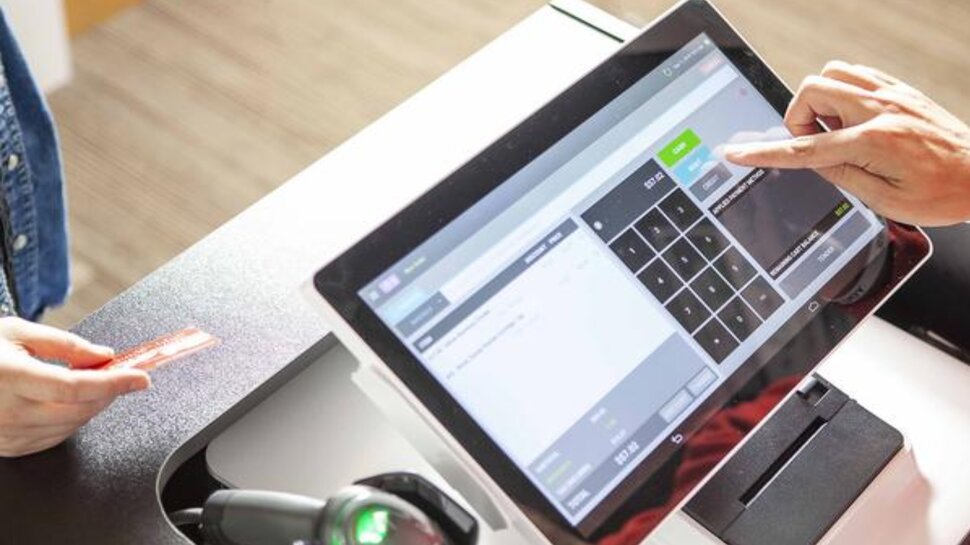It’s an understatement to say that technology is a part of everything people do today. From looking up something on your phone and ordering products online to communicating with other people, it’s become an integral part of society — and retail technology, including must-have retail POS systems, are no exception.
Retail sales are predicted to be 26.7 trillion by 2025, and whether it’s ecommerce or a brick-and-mortar store, technology will be a big part of that.
When it comes to online shopping, customers expect a hassle-free — and fast — experience, whether they’re shopping on a website, an app, or a mobile site. Consumers expect the same things in-store — an experience that’s easy to navigate, customer-focused, and informative.
Regardless of how they shop, according to the National Retail Federation, “more than three out of five consumers feel retail technologies have improved their shopping experiences. They’ve noticed particular improvement when shopping online, with eight in 10 saying they’ve had better interactions thanks to retailers’ technology investments.”
All this to say that retail and technology are intimately intertwined. But in order for it to be effective, your staff members have to understand it and learn how to use it. Here’s why you should prioritize training your staff on retail technology and how to do it right.
If you're looking for a point-of-sale system for your business, read our guide to the best POS systems.
The benefits of retail technology
In order for employees — and your business, in general — to run at max efficiency, everyone needs to be properly trained on the solutions that you use and implement. Here’s a breakdown of the potential benefits.

Increased productivity
When technology is available and easy to use, employees are more engaged and productive, and this ultimately enables them to contribute more to your bottom line. Research shows that businesses with engaged employees “pull in 2.5 times more revenues compared to competitors with low engagement levels.”
Employee efficiency can also be increased through the use of technology by automating certain processes, which allows them to focus on more important tasks that can help grow your business.
Tech can also do wonders when it comes to managing a team and optimizing productivity. Solutions like cloud-based scheduling systems and staff management apps show managers employee preferences when it comes to hours and shifts, lets those employees know when to take a break, and generally improves communication throughout the staff.
Employee retention
U.S. companies are currently losing $1 trillion dollars each year to employee turnover. And one survey found that of “all retail positions, part-time hourly store employees have the highest turnover rate, with 76% average turnover in 2019.”
There are many factors that come into play, but one reason is thought to be because of outdated technology. In fact, people who work with outdated tech “feel less productive, are 750% more likely to be frustrated, and 450% more likely to want to quit”. With working on old or obsolete equipment being directly tied to job dissatisfaction, it’s no wonder that employees leave.
This costs retailers both time and money. In the time it takes to bring a new hire up to speed, the average company loses between 1% and 2.5% of their total revenue. That’s why in order to keep the employees that you already have, you have to equip them with the tools they need to succeed — and train them how to use those tools.
Best practises for retail technology employee training
Now that we know the benefits of having the right retail tech, let’s discuss the best practices to implement when training your employees on how to use various tools in your business.
Start out with the right technology
How can you best get your team up to speed with technology? Start by giving them great tools to begin with.
Take a step back and look at the apps and solutions that you’re using in your business and try to view them from a beginner’s perspective. Is it easy to grasp? Does it make sense? If the answer is no, look for intuitive apps and tools that are easy to understand for employees at all levels and can help with efficiency and improve your processes.
Starting with the right technology also means using upgraded solutions that work on devices that employees already know how to use. This is one reason why cloud-based apps are so popular. They work on web browsers and mobile devices, meaning you can simply download these apps to your device insteading of introducing new hardware.

Provide role-specific training
According to one survey, 32% of retail employees said they didn’t get any formal training or the training they experienced did not make them better at their jobs. That’s clearly an unacceptable finding, but it can be greatly reduced by providing training on their specific role and any processes that are unique to both their job and your business, in general.
Consider the role of each employee that you’re training and optimize their tech education and experience based on their tasks and responsibilities.
Create simple training and process manuals, provide hands-on education, have new hires shadow top employees in a similar role, and ensure they know the ins-and-outs of your POS system. By having a structured and personalized training plan, every employee will have a way to get quickly acquainted with new technology and their role, ultimately motivating them to do a better job.
In a similar vein, remember that people have various learning preferences. Some may excel at classroom settings while others learn better when they can review the materials on their own. Get to know the learning styles of your team members and do your best to cater to their needs.
Let employees be hands-on
When you get a new piece of technology, especially a new POS system, nothing is better than hands-on experience. According to Kris McCrea Scrutchfield, of McCrea Coaching, “Learning by doing provides the learner with instant feedback and the ability to reflect on what to keep doing, what to tweak and repeat, or what to change altogether. It's a great way to test competency to know if additional support would be helpful to create success for the learner. It moves us beyond theory.”
While many POS providers offer videos, tutorials, and illustrated product documentation to help retail staff learn their systems, nothing can replace the hands-on experience. See to it that your team members get a lot of time to play around with the tools they need to use.
Many business software offer “training mode” which allows users to explore the software without using actual company data. If any of your tools offer this capability, take advantage of it in your training program.

Take it to the real world
You need to have employees use the new technology in a real world situations. Start by planning this training session when the store is a bit slower and you’re less likely to encounter a rush or long lines.
Then have your team members test several different transactions and skills, like processing refunds and exchanges, using a mobile POS out on the floor, or using a variety of payment methods to complete purchases. This gives them a chance to get comfortable with the new technology, while also potentially exposing certain hiccups they may encounter, such as a declined credit card or missing POS integration.
It’s also important to remember that there will be a learning curve when it comes to learning new retail technology, so give staff adequate time to acclimate to the new changes. The more training and practice runs they have, the more confident and skillful they will be when dealing with actual customers.
Gamify the process
Make retail technology training a bit more fun by incorporating aspects of gamification. Depending on your training initiatives, you can do things like creating leaderboards, giving out prizes whenever someone masters a skill, or using quizzes and competitions to test people’s knowledge.
In addition to motivating staff members to do well, gamification initiatives — particularly ones that have a social component — can also build camaraderie and increase rapport among your employees.
Make learning a continuous process
Technology is constantly changing, which means your training and development efforts should evolve along with the times. Periodically revisit your tech education initiatives, and make sure they’re updated. Are you teaching people about the latest version of the software? Are there any new developments that should be added to the material? Take these into consideration then update your training materials accordingly.

Show employee appreciation
Last but certainly not least is to let your retail staff know that you appreciate their willingness to learn new technology and continue to put their best foot forward. This takes little effort, but can go a long way in keeping employees engaged and motivated.
In fact, 79% of employees have reported lack of appreciation as a reason why they have quit, so establish trust and loyalty by acknowledging a job well done and fostering an environment of appreciation.
Check in with them often and get feedback on how they are adapting to the new technology. Highlight the impact their efforts are making, and see if there are any changes that can be made to make their job easier or more efficient. Be sincere and specific with your praise. It can do wonders for increasing employee satisfaction, productivity, and your bottom line.
Moving forward with new technology
Technology means change, and change is never entirely easy. But by equipping your retail staff with the tools they need to succeed, you’re investing in the future success of your business. Will it take time? Of course. But proper training is essential, and doing it right will pay dividends in the end.
from TechRadar - All the latest technology news https://ift.tt/3dTY5dd

No comments:
Post a Comment